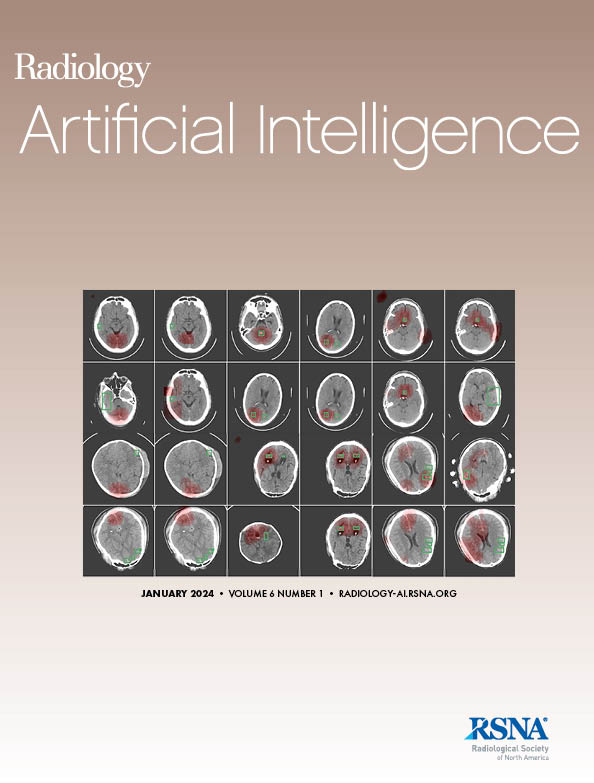Sang-Wook Lee, Jongmin Choi, Min-Je Park, Hajin Kim, Soo-Heang Eo, Garam Lee, Sulgi Kim, Jungyo Suh
求助PDF
{"title":"基于同态加密的隐私保护深度学习模型的发展:肾脏CT成像技术可行性研究。","authors":"Sang-Wook Lee, Jongmin Choi, Min-Je Park, Hajin Kim, Soo-Heang Eo, Garam Lee, Sulgi Kim, Jungyo Suh","doi":"10.1148/ryai.240798","DOIUrl":null,"url":null,"abstract":"<p><p>Purpose To evaluate the technical feasibility of implementing homomorphic encryption in deep learning models for privacy-preserving CT image analysis of renal masses. Materials and Methods A privacy-preserving deep learning system was developed through three sequential technical phases: a reference CNN model (Ref-CNN) based on ResNet architecture, modification for encryption compatibility (Approx-CNN) by replacing ReLU with polynomial approximation and max-pooling with averagepooling, and implementation of fully homomorphic encryption (HE-CNN). The CKKS encryption scheme was used for its capability to perform arithmetic operations on encrypted real numbers. Using 12,446 CT images from a public dataset (3,709 renal cysts, 5,077 normal kidneys, and 2,283 kidney tumors), we evaluated model performance using area under the receiver operating characteristic curve (AUC) and area under the precision-recall curve (AUPRC). Results All models demonstrated high diagnostic accuracy with AUC ranging from 0.89-0.99 and AUPRC from 0.67-0.99. The diagnostic performance trade-off was minimal from Ref-CNN to Approx-CNN (AUC: 0.99 to 0.97 for normal category), with no evidence of differences between models. However, encryption significantly increased storage and computational demands: a 256 × 256-pixel image expanded from 65KB to 32MB, requiring 50 minutes for CPU inference but only 90 seconds with GPU acceleration. Conclusion This technical development demonstrates that privacy-preserving deep learning inference using homomorphic encryption is feasible for renal mass classification on CT images, achieving comparable diagnostic performance while maintaining data privacy through end-to-end encryption. ©RSNA, 2025.</p>","PeriodicalId":29787,"journal":{"name":"Radiology-Artificial Intelligence","volume":" ","pages":"e240798"},"PeriodicalIF":13.2000,"publicationDate":"2025-08-27","publicationTypes":"Journal Article","fieldsOfStudy":null,"isOpenAccess":false,"openAccessPdf":"","citationCount":"0","resultStr":"{\"title\":\"Development of Privacy-preserving Deep Learning Model with Homomorphic Encryption: A Technical Feasibility Study in Kidney CT Imaging.\",\"authors\":\"Sang-Wook Lee, Jongmin Choi, Min-Je Park, Hajin Kim, Soo-Heang Eo, Garam Lee, Sulgi Kim, Jungyo Suh\",\"doi\":\"10.1148/ryai.240798\",\"DOIUrl\":null,\"url\":null,\"abstract\":\"<p><p>Purpose To evaluate the technical feasibility of implementing homomorphic encryption in deep learning models for privacy-preserving CT image analysis of renal masses. Materials and Methods A privacy-preserving deep learning system was developed through three sequential technical phases: a reference CNN model (Ref-CNN) based on ResNet architecture, modification for encryption compatibility (Approx-CNN) by replacing ReLU with polynomial approximation and max-pooling with averagepooling, and implementation of fully homomorphic encryption (HE-CNN). The CKKS encryption scheme was used for its capability to perform arithmetic operations on encrypted real numbers. Using 12,446 CT images from a public dataset (3,709 renal cysts, 5,077 normal kidneys, and 2,283 kidney tumors), we evaluated model performance using area under the receiver operating characteristic curve (AUC) and area under the precision-recall curve (AUPRC). Results All models demonstrated high diagnostic accuracy with AUC ranging from 0.89-0.99 and AUPRC from 0.67-0.99. The diagnostic performance trade-off was minimal from Ref-CNN to Approx-CNN (AUC: 0.99 to 0.97 for normal category), with no evidence of differences between models. However, encryption significantly increased storage and computational demands: a 256 × 256-pixel image expanded from 65KB to 32MB, requiring 50 minutes for CPU inference but only 90 seconds with GPU acceleration. Conclusion This technical development demonstrates that privacy-preserving deep learning inference using homomorphic encryption is feasible for renal mass classification on CT images, achieving comparable diagnostic performance while maintaining data privacy through end-to-end encryption. ©RSNA, 2025.</p>\",\"PeriodicalId\":29787,\"journal\":{\"name\":\"Radiology-Artificial Intelligence\",\"volume\":\" \",\"pages\":\"e240798\"},\"PeriodicalIF\":13.2000,\"publicationDate\":\"2025-08-27\",\"publicationTypes\":\"Journal Article\",\"fieldsOfStudy\":null,\"isOpenAccess\":false,\"openAccessPdf\":\"\",\"citationCount\":\"0\",\"resultStr\":null,\"platform\":\"Semanticscholar\",\"paperid\":null,\"PeriodicalName\":\"Radiology-Artificial Intelligence\",\"FirstCategoryId\":\"1085\",\"ListUrlMain\":\"https://doi.org/10.1148/ryai.240798\",\"RegionNum\":0,\"RegionCategory\":null,\"ArticlePicture\":[],\"TitleCN\":null,\"AbstractTextCN\":null,\"PMCID\":null,\"EPubDate\":\"\",\"PubModel\":\"\",\"JCR\":\"Q1\",\"JCRName\":\"COMPUTER SCIENCE, ARTIFICIAL INTELLIGENCE\",\"Score\":null,\"Total\":0}","platform":"Semanticscholar","paperid":null,"PeriodicalName":"Radiology-Artificial Intelligence","FirstCategoryId":"1085","ListUrlMain":"https://doi.org/10.1148/ryai.240798","RegionNum":0,"RegionCategory":null,"ArticlePicture":[],"TitleCN":null,"AbstractTextCN":null,"PMCID":null,"EPubDate":"","PubModel":"","JCR":"Q1","JCRName":"COMPUTER SCIENCE, ARTIFICIAL INTELLIGENCE","Score":null,"Total":0}
引用次数: 0
引用
批量引用

 求助内容:
求助内容: 应助结果提醒方式:
应助结果提醒方式:


